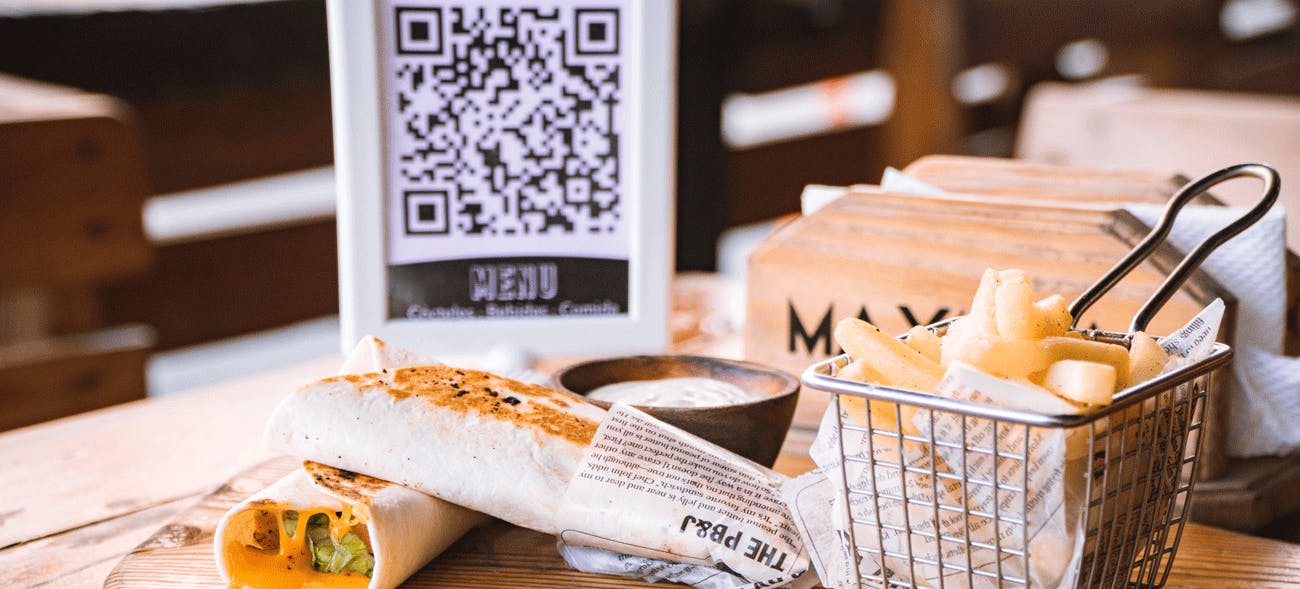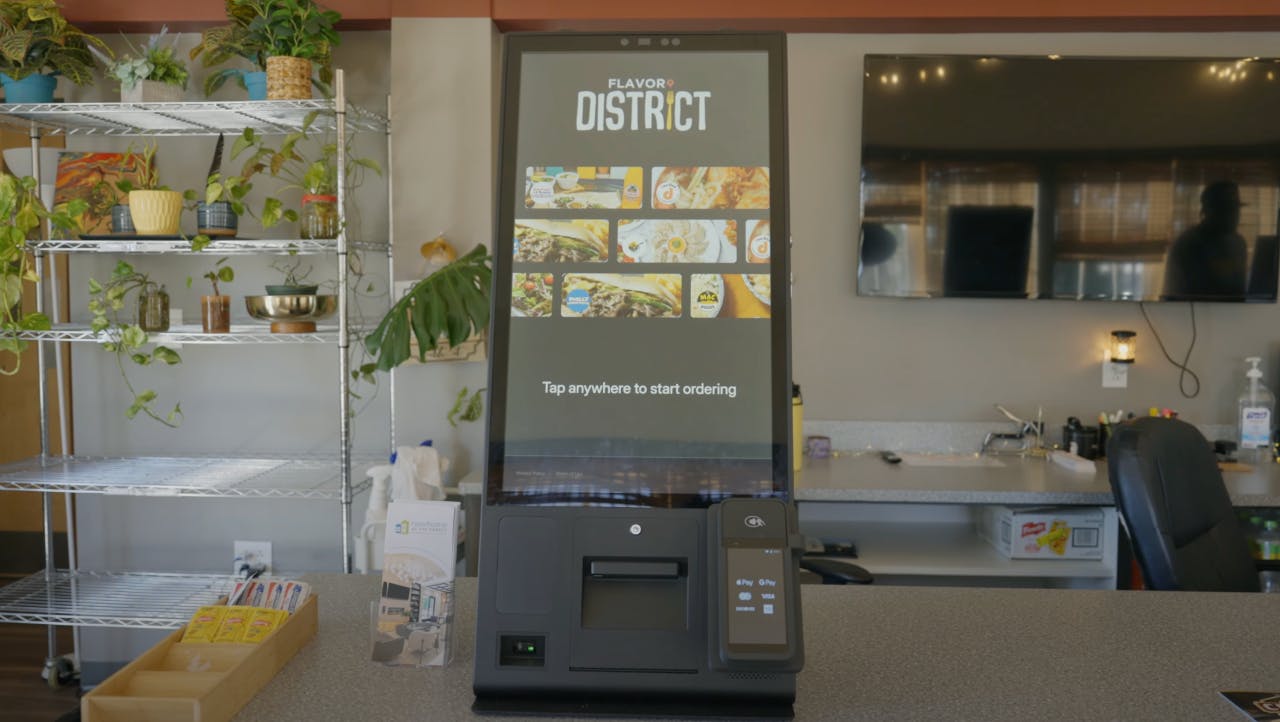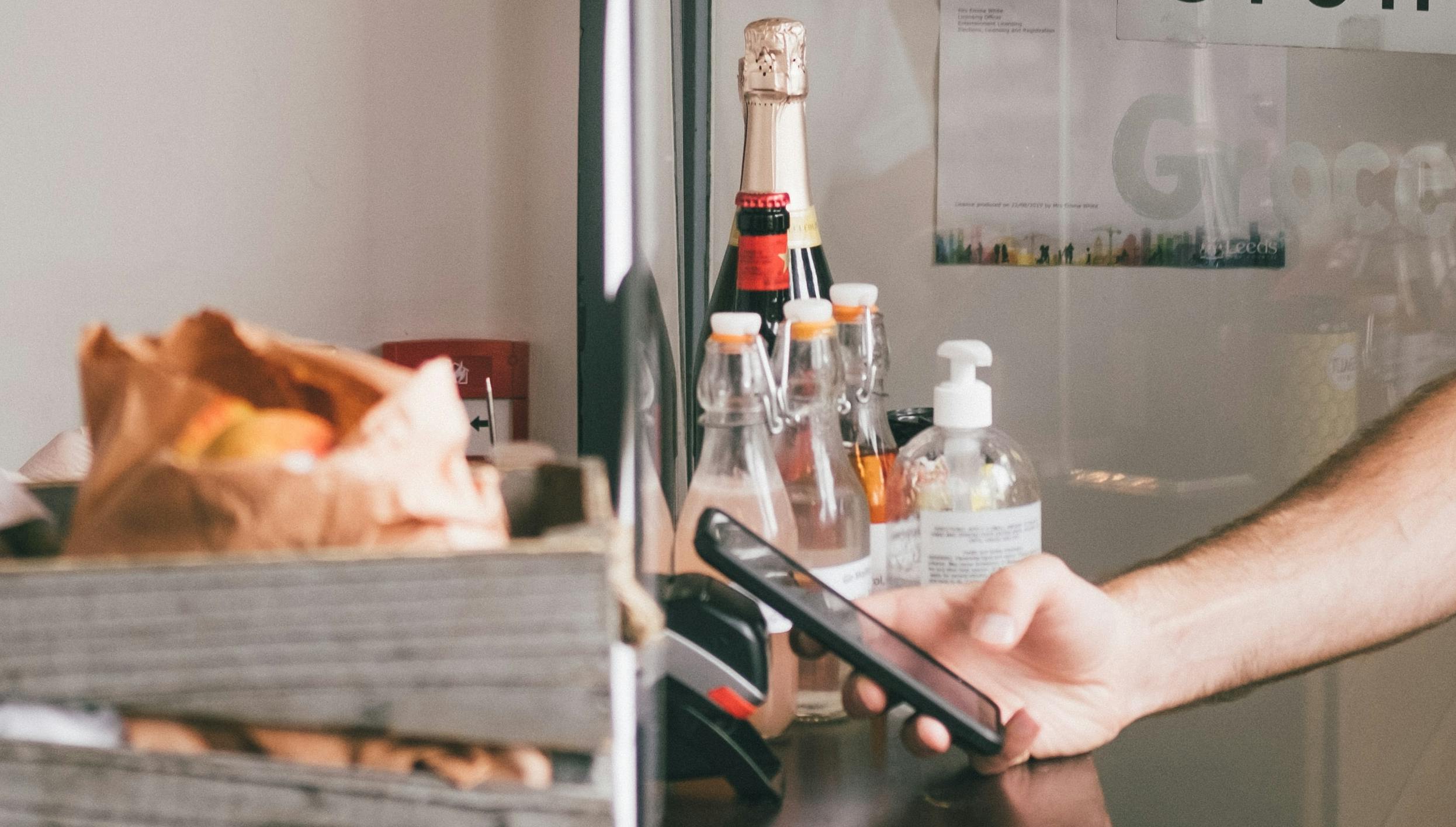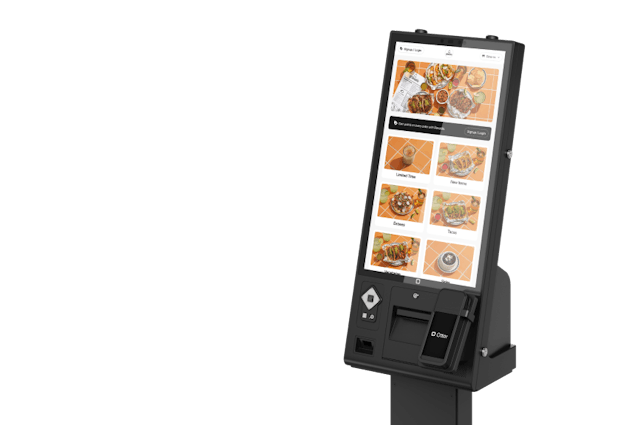
Table of contents
In just a few years, contactless dining has shifted from an emergency public health measure to a cornerstone of the quick service restaurant (QSR) experience. What began as a way to reduce physical touchpoints during the COVID-19 pandemic has become the preferred dining experience for today's customers. Guests now actively choose restaurants with standard features like digital menus, self-serve kiosks, and mobile payment options.
QSRs are leading this adoption because their business models demand speed, efficiency, and consistency across every interaction. Contactless tools deliver exactly what these brands need: the ability to serve more guests faster, with fewer errors and higher customer satisfaction. For operators, contactless dining is no longer a hygiene concern, but now a comprehensive toolkit for driving growth, streamlining workflows, and maintaining competitive advantage in the restaurant industry.
This guide examines how contactless dining functions in today's market, from core technologies to measurable business impact. You'll learn about the operational and financial benefits, discover how industry-leading brands leverage these systems for competitive advantage, and find practical implementation steps tailored to your business—including Otter's integrated solutions.
Ready to explore how QR codes, kiosks, and mobile payments are establishing the new industry standard? Let's start with a clear understanding of what contactless dining means in today's restaurant landscape.
What is Contactless Dining?
Contactless dining refers to a restaurant experience where customers view menus, place orders, and make payments using digital tools without physical menus, cash, and even staff interaction. While this approach gained momentum during the pandemic as a health precaution, it has become a preferred operational strategy that increases efficiency, enhances the customer experience, and helps restaurants meet evolving diner preferences.
Core Components of Contactless Dining
QR Code Menus
- Guests scan codes with smartphones to view digital menus
- Enables instant updates and eliminates printing costs
- Allows at-table ordering for faster, personalized service
Self-Service Kiosks
- In-store touchscreens for browsing, customizing, and ordering
- Reduces wait times and gives guests control over their dine-in experience
- Streamlines payment process
Mobile Ordering and Payment
- Direct online ordering from mobile devices for dine-in or takeout
- Contactless payment via mobile wallets (Apple Pay, Google Pay), credit cards, and tap to pay restaurant solutions
- Integrates with loyalty programs for seamless rewards
From Health Measure to Tech-First Operations
Contactless dining has evolved from emergency health protocols to permanent operational advantages. This shift focuses on creating more intuitive, efficient, and appealing restaurant experiences that meet modern customer expectations.
Growing Adoption Across the Industry
Large QSR Chains: Brands from McDonald's to Starbucks have implemented contactless systems chain-wide, using their scale to standardize operations and gather valuable customer data.
Independent Restaurants: Smaller operators are adopting contactless tools to compete with larger brands, reduce labor costs, and appeal to tech-savvy customers without major infrastructure investments.
Regional Franchises: Mid-sized restaurant groups use contactless dining to maintain consistency across locations while reducing the need for complex operations.
Contactless dining has become a foundational element of how successful restaurants serve, engage, and retain their guests across every segment of the industry.

The Benefits of Contactless Dining for Restaurant Operators
Contactless dining delivers practical advantages that drive long-term business success for restaurant operators. By implementing tools like QR code menus, kiosks, and mobile payment systems, operators create guest-friendly, highly-profitable dining experiences.
1. Operational Efficiency
Faster order flow: Contactless ordering systems let guests place orders directly from phones or self-serve kiosks, leading to faster service and reduced front-of-house bottlenecks.
Fewer errors: Digital orders go straight to the kitchen, minimizing miscommunication and manual entry mistakes.
Reduced staffing needs: With guests self-ordering and paying, restaurants serve more diners with leaner teams, allowing waitstaff to focus on hospitality and higher-value tasks.
2. Elevated Customer Satisfaction
Shorter wait times: Eliminating the need to flag down staff or wait for traditional menus reduces guest frustration and increases table turnover.
User-friendly experiences: Mobile-first designs and intuitive kiosks provide familiar, seamless journeys that today's guests—especially younger demographics—prefer.
Greater customization: Customers easily view modifiers, add-ons, and promotions, making it simple to personalize orders and engage with offers.
3. Improved Revenue Growth
Increased average check size: Digital interfaces showcase upgrades, sides, and combos effectively, leading to more frequent upselling opportunities.
Loyalty integrations: Contactless platforms integrate with rewards programs, encouraging repeat business and enabling data collection for future marketing.
Order accuracy: Fewer errors lead to less waste, happier guests, and minimal refunds or comps.
4. Data-Driven Decision Making
Behavior tracking: Real-time analytics reveal what diners order, when they order, and how they interact with menus.
Menu optimization: Insights from digital ordering identify top-selling items, trends, and underperformers, helping operators refine offerings and reduce costs.
Operational adjustments: Data on peak times and guest flows enable more precise staffing and prep planning, further boosting efficiency.
5. Brand Appeal for Modern Diners
Meeting expectations: Gen Z and millennial guests increasingly select restaurants based on digital convenience and tech-forward amenities.
Staying competitive: Early adoption of contactless dining tools signals innovation. It can strengthen a brand’s reputation and often serves as a deciding factor when customers choose where to dine.
Contactless dining delivers measurable benefits across operations, guest satisfaction, revenue, and competitive positioning. As the industry continues evolving digitally, these advantages are becoming essential standards that operators cannot afford to overlook.
The Tools Powering Contactless Dining
Today's contactless dining experience relies on smart, interconnected technologies that streamline both front- and back-of-house operations. Let's examine the three core technologies driving this shift.
QR Code Menus
Instant menu updates: QR code menus allow operators to update offerings in real-time, eliminating printing costs and ensuring menu accuracy.
At-table ordering: Guests browse and order directly from smartphones, sending orders straight to the kitchen and reducing face-to-face interaction with staff.
Enhanced guest experience: Streamlined ordering leads to faster service and enables bill splitting or open tabs for group dining.
Integrated analytics: QR menu systems collect actionable data on ordering behavior, helping restaurants optimize offerings and track trends.
Hygiene and convenience: Digital menus reduce physical touchpoints and boost guest comfort throughout the ordering process.
Otter's solution: Otter's Digital Dine-In platform combines customizable QR code menus with POS integrations, enabling table-side ordering, multiple payment options (including Apple Pay and Google Pay), and seamless kitchen communication.
Self-Service Kiosks
Order flow optimization: Self-ordering kiosks, like Otter’s, allow guests to customize and place orders independently, increasing order accuracy and minimizing congestion during busy periods.
Upselling opportunities: Visual interfaces guide diners to add upgrades or extras, boosting average ticket size.
Staff efficiency: By moving repetitive ordering tasks to technology, team members can focus on food quality and hospitality.
Real-world impact: Brands using self-service kiosks report streamlined operations and stronger bottom lines. At Flavor District, Otter's integrated solutions helped reduce order errors, improved operational oversight, and freed up staff to engage more personally with guests—all with simple onboarding and user-friendly analytics.
Mobile Payments
Faster checkout: Guests can tap to pay using mobile wallets like Apple Pay and Google Pay, expediting payment methods and reducing wait times.
Loyalty integration: Mobile payment systems link with loyalty apps, enabling easy points accrual and redemption, as demonstrated by QSR leaders like Starbucks and Chick-fil-A.
Boosted customer engagement: Digital checkouts create opportunities for marketing outreach and return visits through personalized rewards.
Operational benefits: Mobile payments integrate directly with point of sale systems, reducing manual entry, simplifying accounting, and providing real-time data insights on guest spending habits.
Together, these contactless tools enable restaurant brands to serve more guests and make smarter, data-backed decisions that drive sustainable growth. With flexible platforms like Otter's suite, operators at any scale can adapt quickly to changing consumer expectations and industry demands.

Contactless in Action: How Top QSRs Lead the Way
Adopting contactless dining solutions has become a proven strategy that sets leading QSR brands apart. Here's how industry frontrunners leverage these technologies, and what smaller QSRs can learn from their approaches.
1. McDonald's: Self-Order Kiosks and Digital Engagement
Overview: As one of the world's largest QSR chains, McDonald's has deployed self-service kiosks and mobile ordering across thousands of locations to streamline service and enhance guest satisfaction.
Contactless Implementation:
- Self-order kiosks for customizable menu options and fast checkouts
- Contactless payments via app and in-store devices
- Integration of digital loyalty and experience platforms
Impact/Results:
- Reported reductions in lines and wait times
- Kiosks foster a cashless, fully contactless purchase environment
- 51% of grab-and-go customers surveyed said kiosk ordering improved satisfaction (1)
- Enhanced order accuracy and accessibility for diverse customers
Takeaway: Even for smaller chains, digital ordering and payment systems can deliver tangible improvements in speed, accuracy, and guest comfort.
2. Starbucks: Mobile Ordering and Loyalty Integration
Overview: Starbucks' mobile ordering and payment platform, combined with its robust rewards system, has transformed how customers interact with the coffee chain globally.
Contactless Implementation:
- Mobile in-app ordering, payment, and pickup
- Deeply integrated customer loyalty program
- Real-time menu customization and preferred location selection
Impact/Results:
- Mobile orders now account for up to 25% of total U.S. store orders, with loyalty program members driving nearly 60% of sales
- Wait times have been reduced by up to 50% for mobile orders
- Digital orders produce a 20% higher average ticket than in-person orders
- Repeat purchases and app engagement have increased over 30% (2)
Takeaway: Digital platforms not only streamline ordering but also create opportunities for personalized marketing, loyalty engagement, and higher revenue per guest.
3. Taco Bell: Self-Service Kiosks Drive Digital Sales
Overview: Taco Bell has completed a nationwide rollout of self-service kiosks across 100% of its QSR locations, fully embracing the shift to digital.
Contactless Implementation:
- In-store kiosks for menu exploration, order customization, and payment
- Seamless connection to Taco Bell app and mobile channels
Impact/Results:
- Digital sales growth of 35% after kiosk implementation, according to QSR Magazine
- Enhanced guest control and reduced lines, leading to increased satisfaction
- Stores report that guests using kiosks are more likely to explore and customize menu items, boosting average check and operational efficiency
Takeaway: Placing control in the hands of guests fosters deeper menu engagement and unlocks new sales opportunities—benefits that scale to QSRs of any size.
4. Mr. Pickle's Sandwich Shop: Otter-Powered Analytics and Revenue Recapture
Overview: Mr. Pickle's, a West Coast QSR, leveraged Otter's tools to solve costly delivery errors and improve operational transparency.
Contactless Implementation:
- Otter's Revenue Recapture tool to recover funds lost to third-party delivery errors
- Advanced analytics for unified delivery performance oversight
Impact/Results:
- Automated error detection and dispute resolution recovered significant lost revenue
- Unified data platform improved efficiency, reduced errors, and enabled better decision-making across franchise locations
- Franchisees gained real-time insight into delivery operations, saving time and boosting profit margins
Takeaway: Technology-enabled analytics and dispute management are mission-critical for any QSR managing multi-channel orders. Even small chains can see major benefits in both efficiency and profitability.
5. Chick-fil-A: Mobile App and Loyalty Drive Customer Engagement
Overview: Chick-fil-A's "One" mobile app blends mobile ordering, payments, and a highly personalized tiered loyalty program.
Contactless Implementation:
- Seamless mobile ordering with customized pickup and drive-thru
- Rewards program that incentivizes repeat business and incremental spending
Impact/Results:
- Regularly leads U.S. customer satisfaction rankings for QSRs
- App users are significantly more likely to increase order size and frequency
- The loyalty app's tiered structure encourages engagement—repeat mobile users are 110% more likely to add extra items and spend 40% more than planned (3)
Takeaway: Contactless systems that support loyalty and personalization can create strong brand connections and drive higher ticket averages.
6. Domino's: Contactless Ordering and Delivery Innovation
Overview: As an early adopter of contactless delivery and digital ordering, Domino's remains a category leader in both convenience and safety.
Contactless Implementation:
- End-to-end digital ordering (web, mobile app, and most recently, integration with CarPlay)
- Contactless delivery and pickup options for all orders
Impact/Results:
- Real-time order tracking and robust delivery logistics built confidence and customer loyalty
- Streamlined operations mitigated pandemic risks, contributing to continued market share growth
- Enhanced trust and transparency increased customer repeat rates during challenging periods
Takeaway: True contactless restaurant experiences resonate with evolving consumer priorities, building loyalty through convenience and peace of mind even in turbulent times.
What Smaller QSRs Should Remember:
These stories showcase the scalable value of contactless tools: improved efficiency, increased check sizes, happier customers, and actionable business insights. The key is finding user-friendly platforms and partners (like Otter) that make adoption seamless and cost-effective, regardless of business size or tech expertise.
How Otter Helps QSRs Stay Competitive in a Contactless World
As contactless dining becomes the industry standard, restaurant operators need solutions that go beyond individual tools. They need an integrated platform that streamlines workflows, supports omnichannel ordering, and delivers actionable insights. Otter provides exactly that, helping restaurants of all sizes implement and optimize contactless dining systems with ease.
Centralized Management for Multi-Location Operators
Managing contactless dining across multiple locations can be complex, but Otter simplifies operations with a unified dashboard. Operators can track orders, monitor performance, and update menus in real-time from a single platform, regardless of how many stores they manage.
Omnichannel Ordering—from Delivery to Dine-In
Contactless restaurant ordering extends beyond dine-in guests. Otter's platform connects third-party delivery apps, in-store kiosks, QR code menus, and online ordering into one ecosystem. Unlike fragmented solutions that require multiple integrations, Otter's POS connectivity from guest to kitchen ensures seamless data flow and eliminates the technical headaches that often plague multi-vendor setups.
Powerful Data & Profitability Insights
With contactless takeout software and integrated analytics, Otter enables operators to track guest behavior, peak times, and menu performance. These insights drive better decision-making, from staffing schedules to menu engineering. Because Otter's analytics are built into the core platform, operators get deeper, more accurate data that directly translates to actionable business intelligence.
Team Empowerment & Reduced Errors
Contactless systems managed through Otter reduce manual entry and reliance on paper tickets, leading to clearer roles and fewer mistakes. With real-time order sync and transparent workflows, staff can focus on hospitality and food quality instead of troubleshooting processes.

Otter self-service kiosks
Cut labor costs & customer wait times with self-service restaurant kiosks.
Frequently Asked Questions
Can I start contactless dining with Otter if I'm not a large brand?
Absolutely. Otter's tools are designed for scalability, so independent restaurants and small QSR chains can implement digital menus, self-service kiosks, and order management without the complexity or high upfront costs often associated with enterprise systems.
What if I already have a POS system?
No problem. Otter's platform integrates seamlessly with many leading POS systems, allowing you to layer on digital ordering, QR code menus, and kiosk solutions without replacing your existing tech.
How quickly can I launch QR menus or kiosks with Otter?
Most operators can be up and running with Otter's contactless menu or kiosk solutions in days, not weeks. The onboarding process is designed to be straightforward, supported by expert guidance and extensive resources.

Book a demo to see how Otter’s all-in-one platform can help your restaurant thrive.